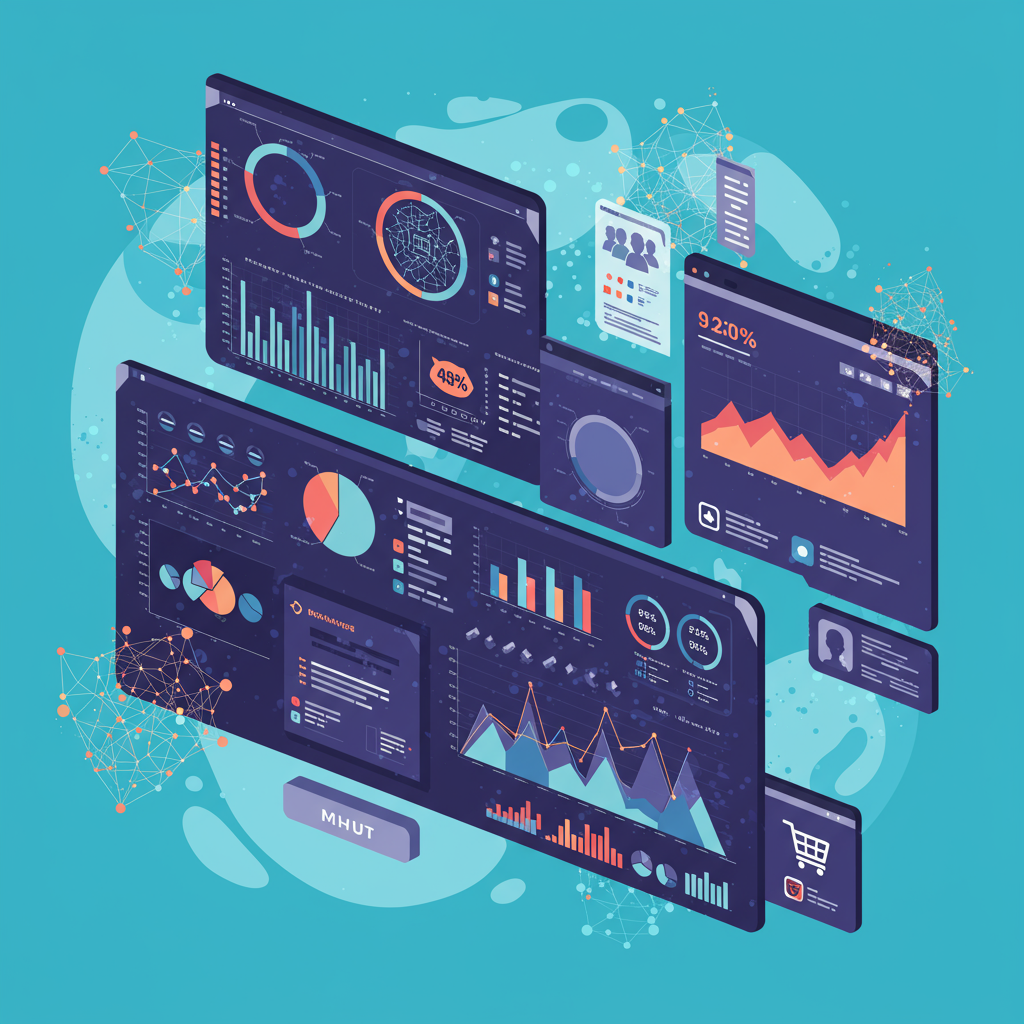Discover how leveraging Artificial Intelligence can give your Shopify dropshipping business an unparalleled edge in a competitive market.
The dropshipping world is fast-paced, exciting, but also incredibly challenging. I’ve seen countless merchants struggle to keep up with fleeting trends and unpredictable demand.
It’s a constant race against time, trying to identify what’s hot, what’s not, and when to pivot. This volatility can lead to missed opportunities or, worse, significant losses.
But what if you could peer into the future? What if you had a crystal ball that showed you exactly what products would explode in popularity next week, next month, or even next quarter?
While a literal crystal ball remains a fantasy, I believe Artificial Intelligence (AI) offers the closest thing we have to it in the e-commerce landscape, especially for dropshippers.
For years, we’ve relied on manual research – sifting through Google Trends, checking competitor stores, scrolling social media feeds. This is time-consuming and often reactive.
The sheer volume of data available today is overwhelming for any human to process effectively. This is where AI truly shines.
AI isn’t just a buzzword; it’s a powerful tool designed to analyze massive datasets at speeds and scales impossible for us. It can spot patterns and correlations that are invisible to the human eye.
At its core, AI in this context uses machine learning algorithms. These algorithms are fed vast amounts of historical data – sales figures, search queries, social media engagement, news articles, even weather patterns.
By learning from this data, the AI can then make predictions about future events, such as product demand or emerging trends, with a remarkable degree of accuracy.
One of the most immediate benefits I see for dropshippers is AI’s ability to predict emerging trends. Imagine knowing about the next fidget spinner or weighted blanket craze before it hits mainstream.
AI tools can monitor millions of data points across the internet – from obscure subreddits to niche fashion blogs – identifying nascent interest long before it appears on major news outlets.
This gives you a crucial head start, allowing you to source products, set up your Shopify store, and launch marketing campaigns while the competition is still playing catch-up.
Beyond just identifying trends, AI excels at demand forecasting. This means predicting how many units of a specific product you’re likely to sell within a given timeframe.
While dropshippers don’t hold inventory, accurate demand forecasting is vital for optimizing your ad spend, scaling your campaigns, and ensuring your suppliers can meet the sudden surge in orders.
It helps you avoid overspending on ads for a product whose demand is waning, or conversely, being caught off guard when a product suddenly takes off.
AI can also act as your digital spy. It can continuously monitor your competitors’ Shopify stores, their pricing strategies, new product launches, and even their advertising creatives.
This intelligence allows you to react swiftly, adjust your own offerings, and maintain a competitive edge without manually sifting through dozens of competitor sites daily.
Understanding your customers is paramount. AI can analyze purchasing patterns, browsing history, and demographic data to segment your audience more effectively.
This enables highly personalized marketing campaigns, product recommendations, and even dynamic pricing strategies tailored to individual customer segments, boosting conversion rates.
Many advertising platforms already use AI, but dedicated AI tools can take this further. They can optimize your ad spend across various channels, identifying the most profitable keywords, audiences, and ad creatives.
This ensures every dollar you spend on marketing is working as hard as possible, maximizing your return on ad spend (ROAS).
So, how do you bring this power to your Shopify store? The good news is that the Shopify App Store is brimming with AI-powered solutions.
You’ll find apps for advanced analytics, marketing automation, product research, and even customer service chatbots, all leveraging AI to some degree.
Many of these apps integrate seamlessly, pulling data directly from your Shopify store – sales data, customer information, product views – and feeding it into their AI models for analysis and prediction.
My advice for getting started is to begin small. Don’t try to implement every AI solution at once.
Identify your biggest pain point – is it finding winning products, optimizing ads, or understanding customer behavior? Then, research AI tools specifically designed to address that challenge.
Experiment with a few options, perhaps starting with free trials. Pay close attention to the quality of the data insights they provide and how actionable they are for your business.
Remember, AI is a tool, not a magic bullet. It provides insights, but you, the merchant, still need to make the strategic decisions. Human intuition and market knowledge remain invaluable.
The benefits are clear: increased profitability, reduced risk, significant time savings, and a powerful competitive advantage.
However, there are challenges. Data quality is crucial – ‘garbage in, garbage out.’ Some advanced tools can be costly, and there’s a learning curve involved in understanding and interpreting AI-generated insights.
I envision a future where AI becomes even more integrated into every aspect of dropshipping, from automated product sourcing to hyper-personalized customer journeys.
It will level the playing field, allowing smaller merchants to compete with larger players by leveraging sophisticated data analysis.
What are your thoughts on integrating AI into your dropshipping business? I’d love to hear your perspective on this evolving landscape.
In conclusion, the dropshipping game is evolving rapidly, and staying ahead requires more than just hard work; it demands smart work.
Embracing AI for trend prediction and demand forecasting isn’t just an advantage; I believe it’s becoming a necessity for long-term success. It empowers you to make data-driven decisions, minimize risks, and capitalize on opportunities before anyone else.






